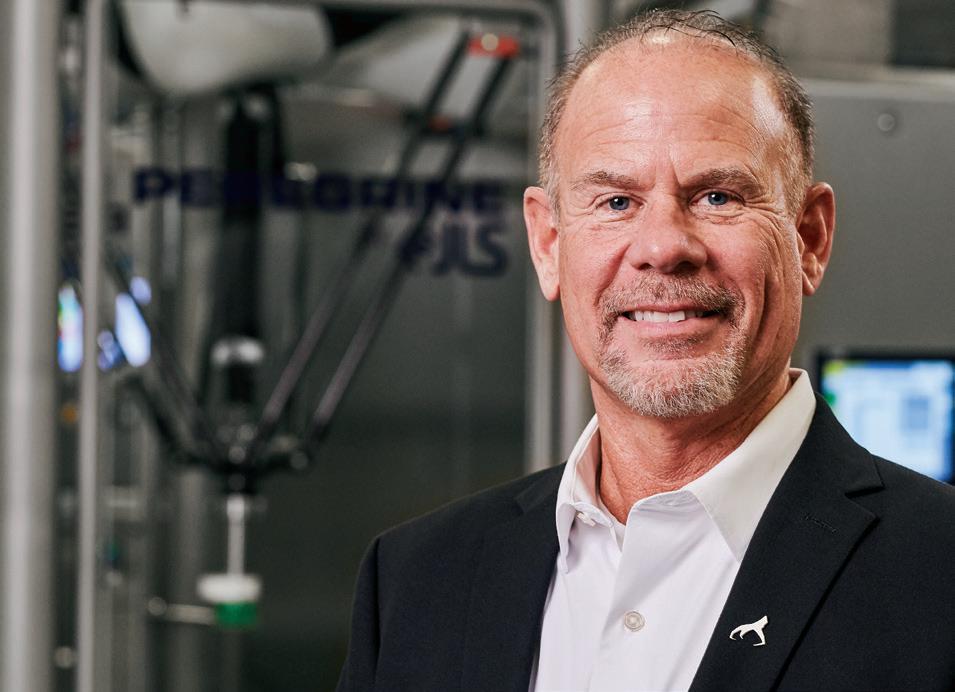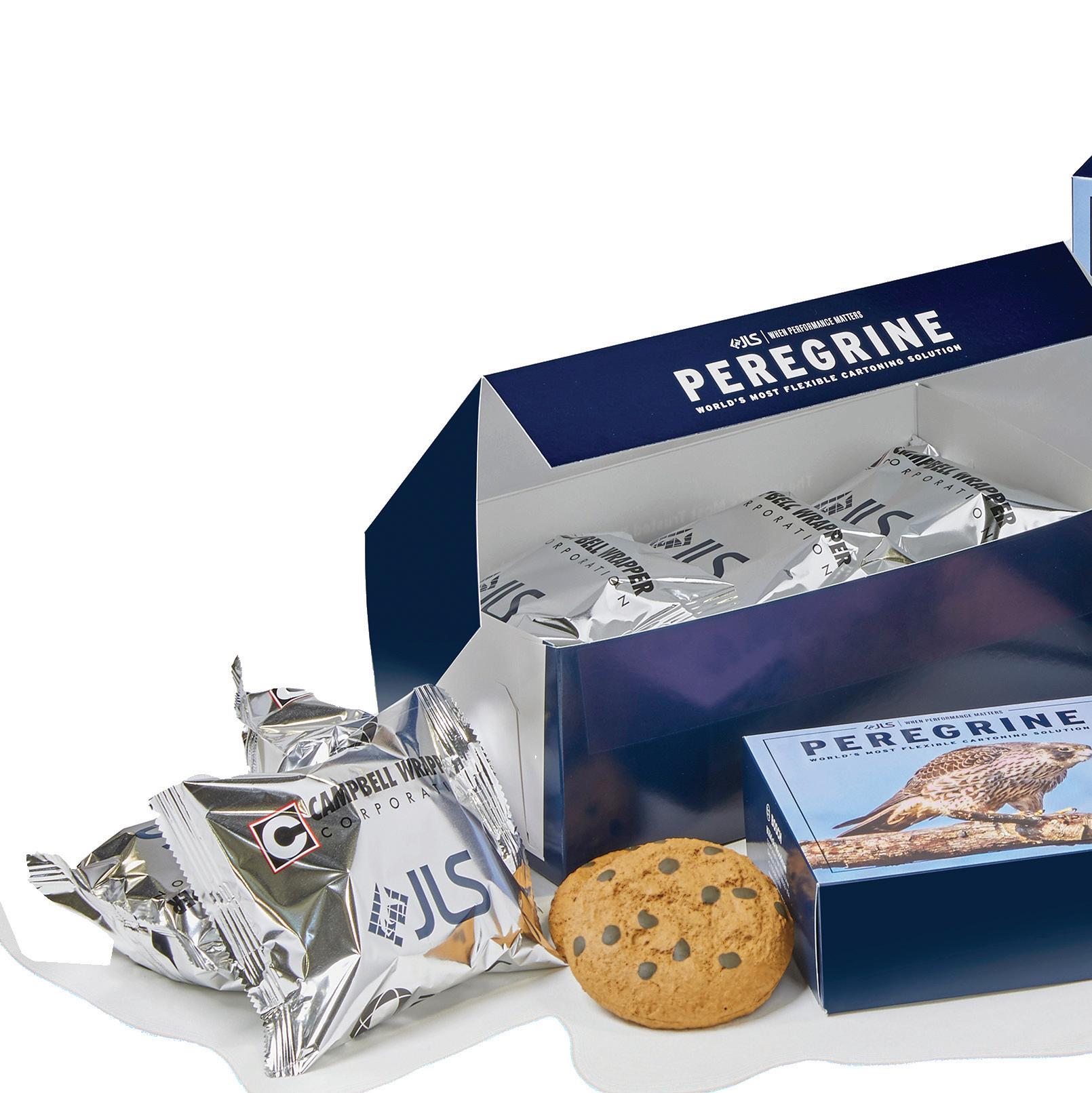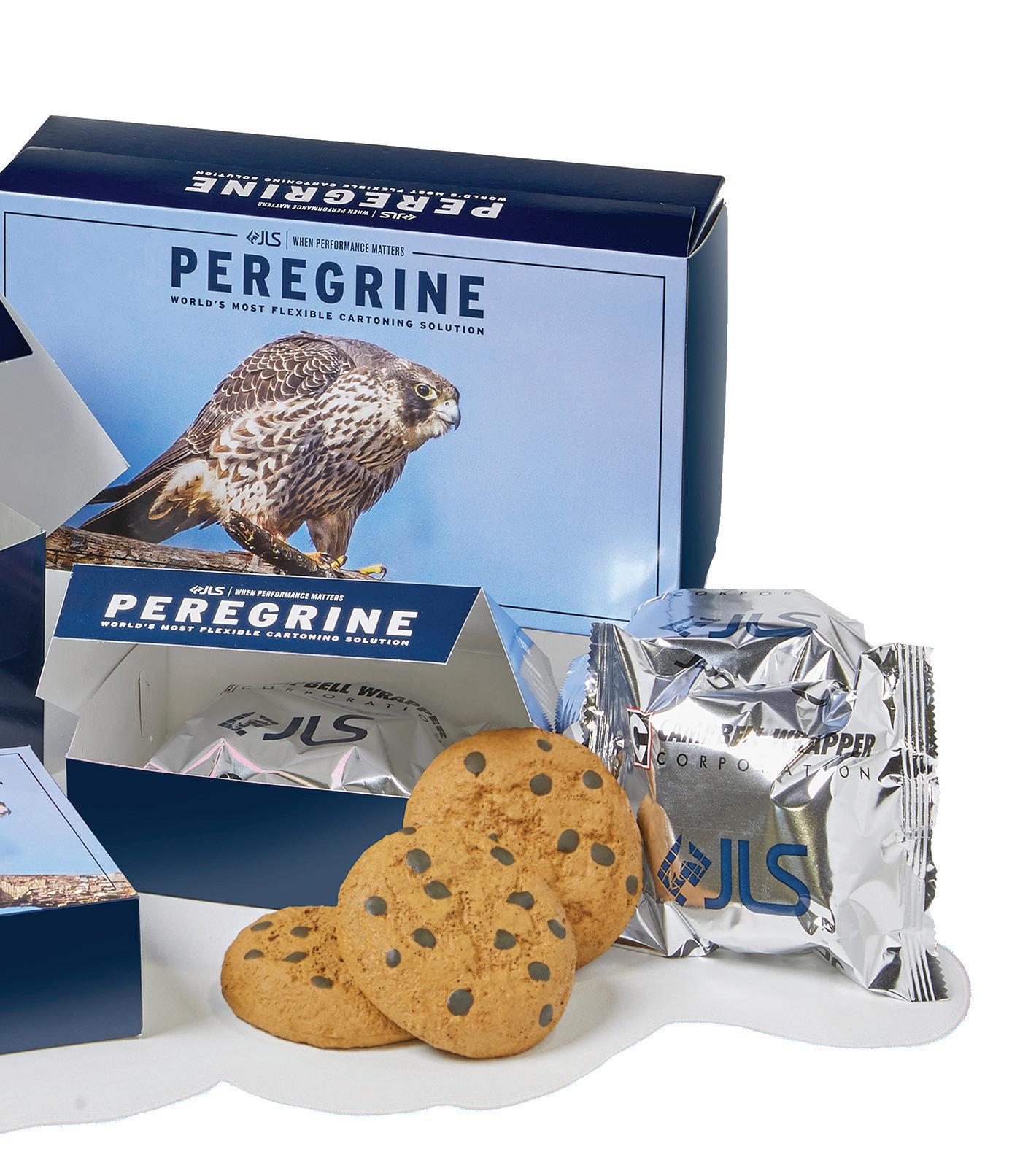
3 minute read
Q&A Gary Pickett Fast, Accurate and Flexible Cartoning
from JLS Magazine #1
JLS® provides an in-depth look at how the Peregrine® cartoning system eliminates transfer conveyors, saves space and eliminates costs while boasting robotic, vision-guided technology.
Q: What are the benefits of the Peregrine® compared to traditional top- or end-load systems?
Pickett: The Peregrine is a robotic, vision-guided top-load cartoning solution. Compared to end-load cartoning, top-load carton applications provide a larger window to place product. The cost savings associated with reduced materials on a top-load system is a big opportunity for our customers.
Tri-seal cartons reduce transportation costs and space requirements versus pre-formed cartons used on a traditional end-load system. Top-load cartons are typically manufactured and shipped as a flat blank while end-load cartons are formed and glued. The empty cartons are then packed into cases, stacked on pallets and shipped to the customer’s plant. By eliminating the need to ship cartons, the Peregrine saves food manufacturers between five and 10 percent of costs associated with material and shipping by forming and closing cartons inline.
Q: Why does JLS® consider the Peregrine the next gen eration of carton loading?

Pickett: Top-load applications are more conducive to automation and we’ve seen the market move away from end-load during the last 10 to 15 years. The reason for this is because you have to build the collation for an end-load application, which requires an in-feed conveyor. From that point, it’s then pushed into the end of a carton, and that’s a challenge in itself just getting the product safely and accurately into the carton.
On the Peregrine, JLS builds the collation with the robot directly into the carton and eliminates all transfers from the infeed into the carton. With robotic applications, our solution is much more conducive to automation. Plus, robots are more affordable now than they were in the past, allowing food producers to move to automation and convert to a top-load carton application.
Q: How does the Peregrine’s JLS TRAK™ achieve full carton control from forming through loading?
Pickett: The carton management system of the Peregrine is unique compared to other top-load solutions. The heart of the Peregrine’s carton management system is the JLS TRAK, which moves the cartons from forming to the robotic loader and then into the closing area. Once that carton comes out of the Peregrine machine, it is fully formed, loaded and sealed.
With the Peregrine, there are no additional conveyors needed to transport the open carton to the closing machine—we eliminate that connecting conveyor and get the former and loading machines as close as possible to the robot, which closes the cartons inline.
Once a carton is formed, it is placed directly into the JLS TRAK system where it is carried through closing. The Peregrine quickly grabs the carton, places it into the track and moves it at very high speeds and with extremely accurate positioning. This, combined with our experience with vision-guided systems, helps save floor space which is a premium, and allows the ability to do something they couldn’t do before with automation.
Q: Why is it important to have fast, reliable cartoning?
forming to the loading section relies on friction to move. This is the Achilles heel of the whole system because you have to aggressively remove the cartons from the forming machine and clear them in time for the next batch of cartons to come down and transport it to the loading system. The traditional way of doing that is to place the carton former and carton loader far away from each other between the conveyors, which typically leads to the cartons slipping and sliding, and making it difficult to move. Unless the carton and forming machines are placed close together, full carton control is not possible.
Q: What type of control platform does the Peregrine utilize?
Pickett: The controls platform for the Peregrine aligns with the other products in our portfolio. We use B&R Automation’s software and control platform not only for the machine but also the robot. Everything, including the robot and track, is on one, single platform. The advantage of moving to the B&R controls platform for all of our products is that everything is on one architecture, and the entire system is programmed and controlled from one software package. Doing this eliminates any connectivity through the system that can cause delays and mutations. Customers simply log into one system to assess and diagnose
Turn to page 10 to learn more about the B&R
The Peregrine is high-speed. How fast is that?
It depends on the application and various production dynamics. Packaging lines are limited to the carton forming and closing capacity of existing machinery, but the Peregrine can exceed speeds of 150 cartons per minute, which accommodates more than 90 percent of applications.
Compared to a traditional top load system, the Peregrine can offer higher cartoning speeds in a smaller footprint. In fact, a Peregrine placed behind three traditional flow wrappers can sometimes free up half of a production floor.
For more information on the Peregrine, visit www.jlsautomation.com/peregrine

Patrick McDermott








